Turkey has emerged as a leading destination for hair restoration procedures, offering top-tier quality at affordable prices. With over 1 million people seeking hair transplants in 2024, the country is expected to attract 1.1 million patients in 2025.
The cost of hair transplants in Turkey typically ranges between $2,500 and $6,000, with all-inclusive packages and no hidden costs. This comprehensive guide will explore the detailed pricing information for hair transplants in Turkey, examining the factors that influence pricing and helping potential patients make informed decisions.
Key Takeaways
- Turkey offers affordable hair transplant solutions with top-tier quality.
- The average cost of a hair transplant in Turkey ranges between $2,500 and $6,000.
- Over 1 million people sought hair transplants in Turkey in 2024.
- The number of grafts required, technique selection, and surgeon experience influence hair transplant cost.
- Turkey is expected to receive 1.1 million hair transplant patients in 2025.
Understanding the Hair Transplant Market in Turkey
Turkey’s hair transplant sector has seen a remarkable surge in recent years, with over a million people traveling there annually for hair restoration treatments. This growth has positioned Turkey as a global leader in hair transplant procedures, with Istanbul becoming the epicenter of this booming medical tourism industry.

The Rise of Medical Tourism in Turkey
The country’s strategic position between Europe, Asia, and the Middle East makes it easily accessible for international patients seeking affordable hair restoration solutions. Government initiatives have actively supported the growth of medical tourism in Turkey, offering incentives to clinics and establishing quality standards to ensure patient safety.
Key Statistics on Hair Transplants in Turkey
Statistical data shows remarkable growth in the sector, with key statistics highlighting Turkey’s dominance in the global hair transplant market:
- Over 1 million people travel to Turkey annually for hair transplants, contributing approximately $2 billion to the economy.
- The Turkish hair transplant market represents nearly 60% of the global hair transplant tourism market.
- Hundreds of specialized clinics compete to offer innovative techniques and comprehensive care packages to international patients.
This data underscores Turkey’s position as a leader in the hair transplant industry, driven by a combination of quality care, competitive pricing, and strategic location.
Hair Transplant Cost in Turkey: Price Ranges for 2025
Hair transplant costs in Turkey are influenced by a variety of factors, including the technique used and the number of grafts required. As of 2025, the average cost of a hair transplant in Turkey is projected to be around $4,500, with prices typically ranging from $2,500 to $6,000.
Average Cost Overview
The average cost of a hair transplant in Turkey is approximately $4,500. This cost is calculated based on the number of grafts required, with the average price per graft being around $1.21.
Cost Per Graft vs. Package Pricing
Turkish clinics offer two primary pricing models: per graft pricing and all-inclusive package deals. The per graft pricing averages between $1 to $3 per graft, while package deals cover the procedure and additional services, potentially offering better value but with limitations on the number of grafts included.
Price Variations by Region in Turkey
Regional price variations exist within Turkey, with Istanbul generally commanding higher prices due to its concentration of premium clinics and experienced surgeons. Cities like Ankara and Antalya offer more competitive pricing while maintaining quality standards, making them attractive alternatives for budget-conscious patients.
Understanding these pricing structures and regional variations is crucial for potential patients to budget appropriately for their hair transplant procedure in Turkey.
Different Hair Transplant Techniques and Their Costs
Turkey’s hair transplant market offers a variety of techniques, including FUE, DHI, Sapphire FUE, and FUT, each priced differently. The choice of technique significantly affects the overall cost of the procedure.
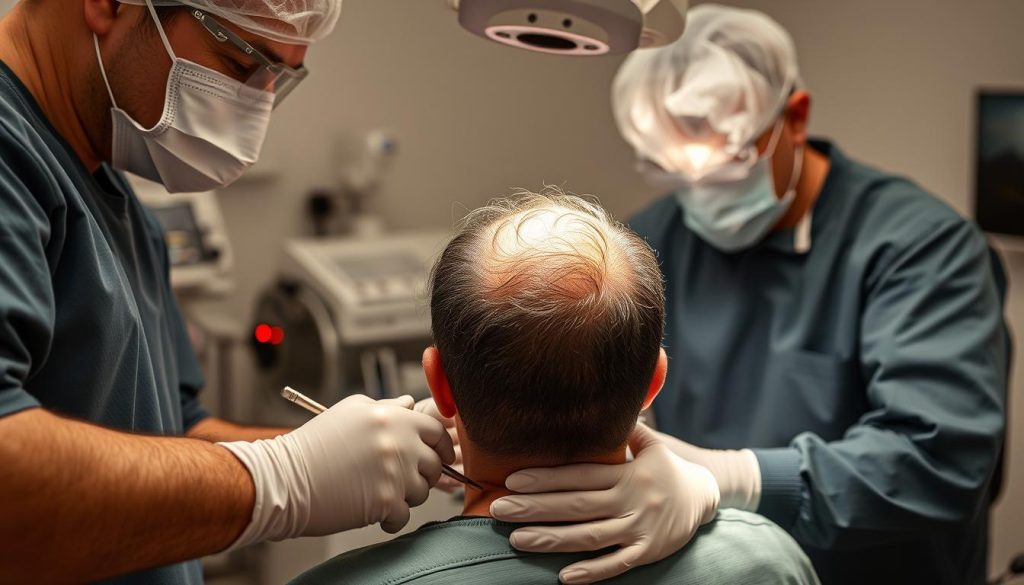
FUE Technique: Process and Pricing
The Follicular Unit Extraction (FUE) technique is the most common method in Turkey, typically priced between $2,500-$6,000. It involves extracting individual hair follicles without leaving linear scars, making it a preferred choice for many patients.
DHI Method: Process and Pricing
DHI (Direct Hair Implantation) represents a premium option at $3,000-$8,000. It utilizes specialized Choi pens for direct implantation without creating recipient channels beforehand, offering quicker recovery and more precise placement.
Sapphire FUE: Process and Pricing
Sapphire FUE, a refined version of standard FUE, uses sapphire blades instead of steel and costs approximately $2,300-$6,000. It creates smaller, V-shaped incisions, allowing for denser graft placement and reduced trauma.
FUT Method: Process and Pricing
The FUT (Follicular Unit Transplantation) method, though less commonly performed in Turkey, ranges from $5,000-$50,000. It involves removing a strip of scalp tissue, making it more suitable for patients requiring large numbers of grafts.
Each technique offers different advantages in terms of scarring, recovery time, and natural-looking results, with pricing reflecting the complexity, time required, and specialized tools used during the procedure.
What’s Included in All-Inclusive Hair Transplant Packages

Turkey’s hair transplant clinics are known for their all-inclusive packages, which cover a wide range of services beyond the surgical procedure itself. These comprehensive packages are designed to provide a hassle-free experience for international patients.
Standard Package Components
Standard components typically include the hair transplant operation, pre-operative consultations, necessary medications, airport transfers, hotel accommodation (usually 2-3 nights in a 4-5 star hotel), and translator services. Most reputable clinics also provide post-operative care products such as specialized shampoos, lotions, and medications to support healing and optimal hair growth results.
Potential Hidden Costs to Consider
While all-inclusive packages cover a lot, potential patients should be aware of possible costs not covered, such as extended hotel stays due to complications, additional treatments not mentioned in the initial quote, or premium upgrades to accommodation or services. Clarifying exactly what’s included in your quoted price before committing is essential.
Factors Affecting Hair Transplant Costs in Turkey
Understanding the factors that affect hair transplant costs in Turkey is crucial for potential patients. The final price of a hair transplant is determined by several key elements that clinics consider when providing a quote.
Number of Grafts Required
The number of grafts required is a primary factor affecting hair transplant costs. Clinics typically charge per graft or offer tiered package pricing based on graft quantity ranges. The more grafts needed, the higher the overall cost.
Clinic Reputation and Location
The reputation and location of the clinic significantly impact pricing. Established clinics in premium locations like Istanbul tend to charge more than newer facilities in less central areas or other Turkish cities.
Surgeon Experience and Qualifications
Surgeon experience and qualifications create substantial price variations. Procedures performed by internationally recognized surgeons with extensive experience command premium rates compared to those performed by less experienced practitioners.
Technique Used for the Procedure
The technique used for the hair transplant procedure also influences cost. Advanced methods like DHI and Sapphire FUE are generally priced higher than standard FUE or FUT due to the specialized equipment and additional expertise required.
By understanding these factors, potential patients can better evaluate price quotes and determine whether a particular clinic offers good value.
Cost Comparison: Turkey vs. Other Countries
The cost of hair transplant procedures varies significantly across different countries, making it essential for potential patients to research and compare prices. Turkey has emerged as a popular destination for hair transplants due to its competitive pricing.
Turkey vs. United States
Hair transplant procedures in Turkey average between $2,500 and $6,000, while the same procedures in the United States typically cost between $10,000 and $15,000. This represents a cost savings of approximately 70-80% for patients choosing Turkey.
Turkey vs. United Kingdom
The United Kingdom offers hair transplants at prices ranging from $6,000 to $10,000, still significantly higher than Turkish prices. Patients can potentially save $4,000 to $7,000 by choosing Turkey, even after accounting for travel expenses.
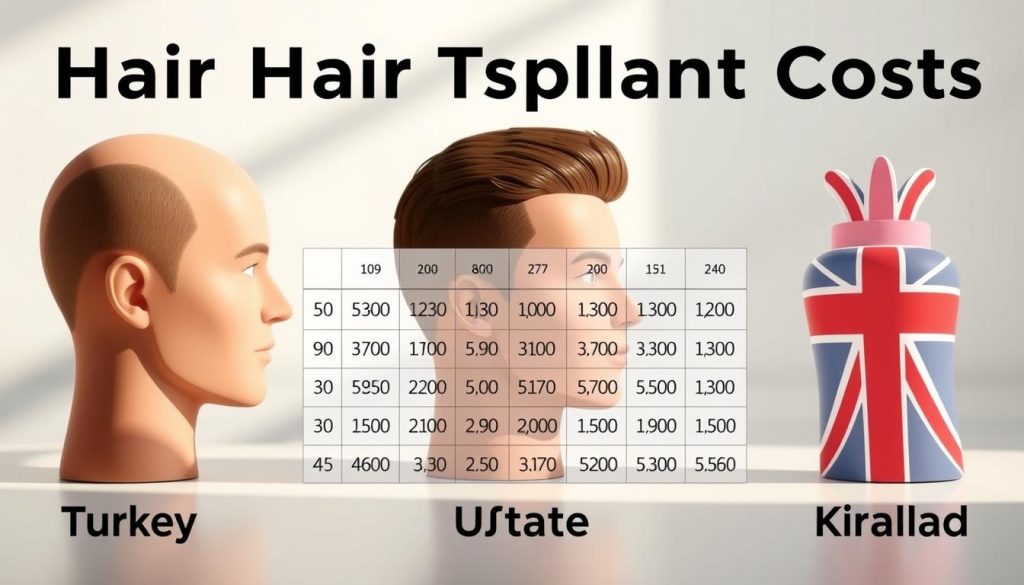
Turkey vs. Canada
Canadian patients face some of the highest costs globally, with prices ranging from $8,000 to $12,000 for comparable procedures. Choosing Turkey can result in savings that often exceed 75%, even after factoring in travel costs.
Turkey vs. European Countries
European countries like Germany, France, and Spain offer hair transplants at prices between $5,000 and $15,000. Turkey provides savings of 50-70% compared to these countries while maintaining similar or sometimes superior quality standards.
The significant price differences between Turkey and other countries are primarily due to economic factors rather than quality disparities. This makes Turkey an attractive option for individuals seeking high-quality hair transplants at a lower cost.
Why Hair Transplants Are Cheaper in Turkey
The affordability of hair transplants in Turkey can be attributed to various economic and structural factors that benefit international patients. Several key elements contribute to the competitive pricing of hair restoration procedures in the country.
Currency Exchange Advantages
Turkey’s favorable currency exchange rates give international patients significant purchasing power. The value of the Turkish lira against major currencies like the dollar, euro, and pound creates an immediate cost advantage for those seeking hair transplants.
Lower Operating Costs
Operating costs in Turkey are substantially lower than in Western countries. Reduced expenses for clinic facilities, staff salaries, medical supplies, and general overhead directly translate to lower procedure prices, making hair transplants more affordable.
Government Incentives for Medical Tourism
The Turkish government actively supports medical tourism through tax incentives, subsidies, and promotional campaigns. This support helps clinics offer competitive pricing while maintaining quality standards and modern facilities.
High Volume of Patients
The high volume of patients creates economies of scale for Turkish clinics. By performing thousands of procedures annually, clinics can distribute fixed costs across more patients, resulting in lower per-procedure pricing.
| Factor | Description | Impact on Cost |
|---|---|---|
| Currency Exchange | Favorable exchange rates for international patients | Reduced costs due to favorable exchange rates |
| Operating Costs | Lower costs for facilities, staff, and supplies | Lower overall procedure costs |
| Government Incentives | Tax incentives and subsidies for medical tourism | Competitive pricing without compromising quality |
| High Patient Volume | Economies of scale due to high procedure volume | Lower costs per procedure |
These factors combined create a competitive market environment in Turkey, with hundreds of clinics vying for international patients. This competition drives continuous price reductions while encouraging quality improvements and service enhancements.
Payment Options for Hair Transplants in Turkey
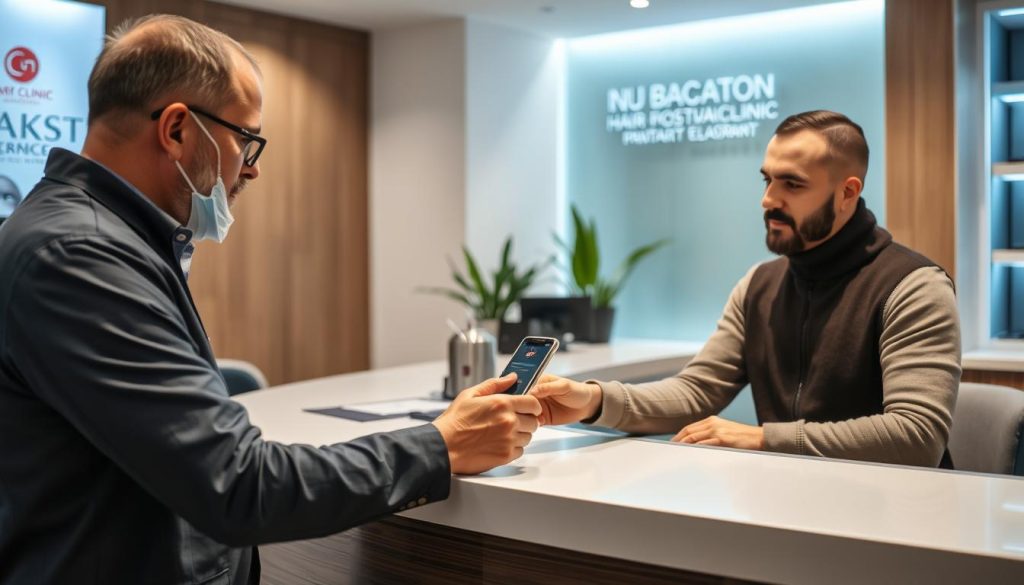
Hair transplant clinics in Turkey offer various payment methods to accommodate international patients. This flexibility is part of what makes Turkey an attractive destination for those seeking hair restoration.
Cash Payment Considerations
Cash payments are widely accepted at most clinics, with many facilities accepting major foreign currencies like USD, EUR, and GBP directly. However, exchange rates may vary between clinics, so it’s advisable to check the rate before making a payment.
Credit Card Payment Process
When paying by credit card, patients should ensure their card is enabled for international transactions. They should also be aware of potential foreign transaction fees, which typically range from 1-3% of the total procedure cost.
Some clinics may offer installment payment plans or early booking discounts, though these options vary significantly between facilities. Patients should clarify payment timing expectations during their consultation.
The Hair Transplant Procedure Timeline
The process of getting a hair transplant involves multiple steps that are crucial for success. Understanding these stages helps patients prepare for their journey to regaining a fuller head of hair.
Pre-Operative Consultation and Planning
The hair transplant journey typically begins with a pre-operative consultation, either virtual or in-person upon arrival in Turkey. During this phase, the surgeon evaluates the patient’s hair loss pattern and donor area quality, discussing expectations and potential outcomes. A customized treatment plan is designed, determining the appropriate technique and number of grafts needed.
The Day of the Procedure
On the day of the procedure, patients undergo preliminary blood tests and receive local anesthesia. The surgery typically lasts 6-8 hours, depending on the number of grafts and technique used. The process involves extraction of follicular units, creation of recipient sites, and precise implantation of the harvested grafts.
Post-Operative Care and Recovery
Post-operative care begins immediately after surgery with instructions on sleeping position, washing protocols, and medication schedules to ensure optimal graft survival and healing of the scalp. Proper care is crucial for achieving the best results from the transplant.
Quality Considerations for Low-Cost Hair Transplants
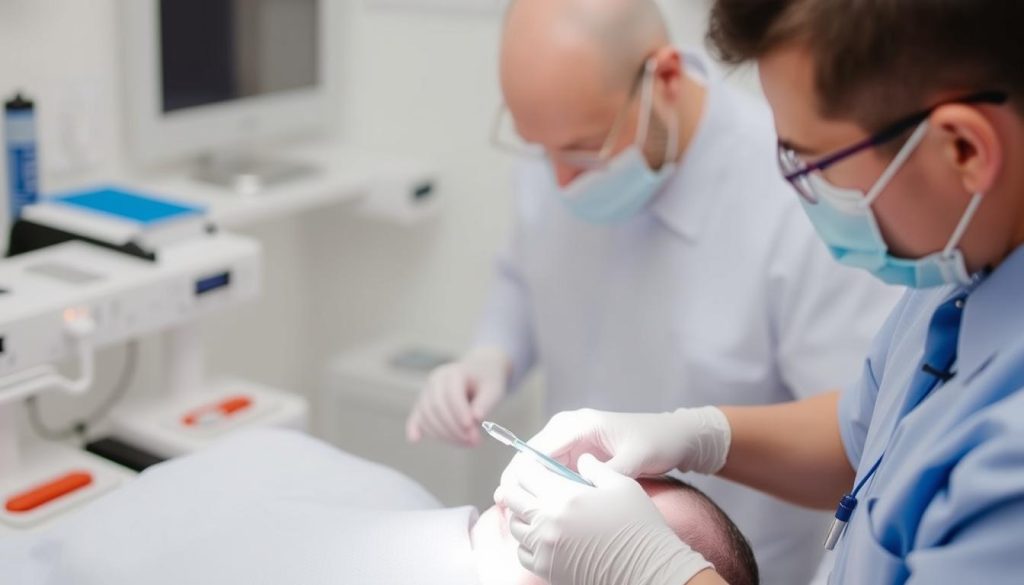
As Turkey’s hair transplant market grows, so does the importance of choosing a quality clinic. With over 350 clinics operating in the country, the risk of compromising on quality increases. Patients must be cautious and thoroughly research potential clinics to ensure they receive the best possible care.
Accreditation and Certification Standards
Reputable clinics should be registered with the Turkish Ministry of Health and hold international certifications such as JCI (Joint Commission International) accreditation or membership in recognized organizations like ISHRS (International Society of Hair Restoration Surgery). These credentials indicate a clinic’s commitment to maintaining high standards in patient care and surgical procedures.
Balancing Cost with Quality
While cost is an important factor, it should not be the only consideration. Patients should be wary of exceptionally low-priced offers, as these often indicate compromises in surgical expertise, facility standards, or post-operative care. Finding a balance between cost and quality typically involves choosing mid-range clinics with established reputations, verifiable results, and transparent practices regarding who performs each aspect of the procedure.
How to Choose a Reputable Hair Transplant Clinic in Turkey
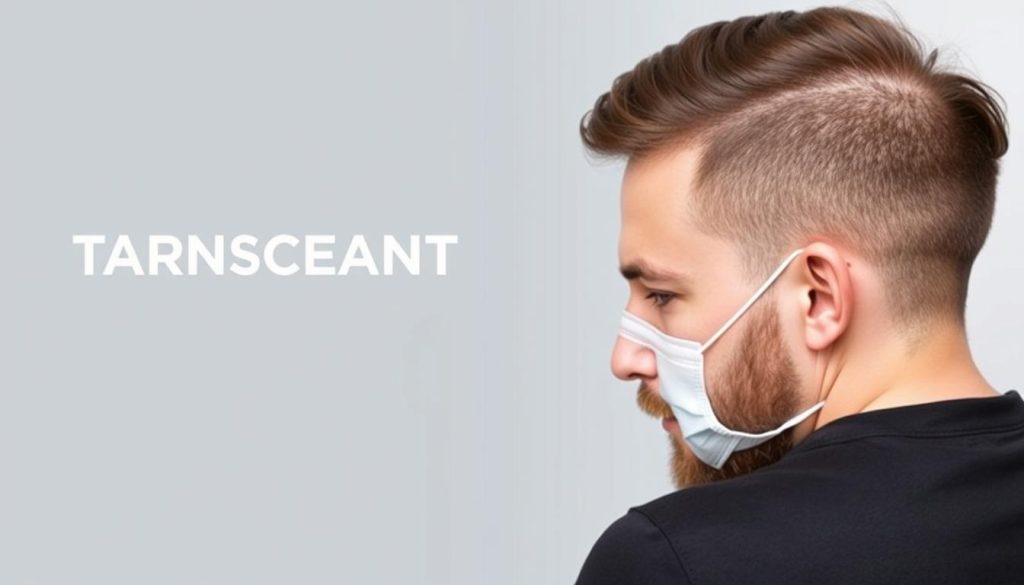
Choosing a reputable hair transplant clinic in Turkey is a crucial step in ensuring a successful hair restoration experience. With the rise of medical tourism in Turkey, numerous clinics have emerged, making it essential to conduct thorough research.
Researching Clinic Credentials
When selecting a hair transplant clinic, it’s vital to verify their credentials. Look for clinics that are licensed by the Turkish Ministry of Health and have memberships in international hair restoration organizations. Ensure that the clinic’s surgeons have the necessary qualifications and experience in performing hair transplant procedures.
Reading Patient Reviews and Testimonials
Patient reviews and testimonials can provide valuable insights into a clinic’s reputation. However, be cautious of fabricated reviews, and look for detailed testimonials that describe the entire experience. Check multiple review platforms, such as Google, Trustpilot, and RealSelf, to get a comprehensive view.
Examining Before and After Photos
Before and after photos can give you an idea of a clinic’s work quality. Look for consistent lighting, angles, and time frames in the photos. Request photos of patients with similar hair types and loss patterns to your own situation to get a more accurate representation of the clinic’s capabilities.
By following these guidelines and conducting thorough research, you can make an informed decision when choosing a hair transplant clinic in Turkey that balances quality and affordability.
Expected Results and Success Rates
Understanding the expected results and success rates of a hair transplant in Turkey is crucial for individuals considering this procedure. Hair transplant results develop gradually over a predictable timeline, and being aware of what to expect can help manage expectations.
Timeline for Hair Growth After Transplant
After a hair transplant, patients typically experience initial shedding of transplanted hairs within 2-4 weeks, followed by a dormant phase lasting approximately 3 months. New growth begins between 3-4 months post-procedure, with patients seeing approximately 30% of their final results at this stage. Continued growth reaches 60% at 6 months and 80-90% at 9 months. The final results become fully visible around 12-18 months after the procedure.
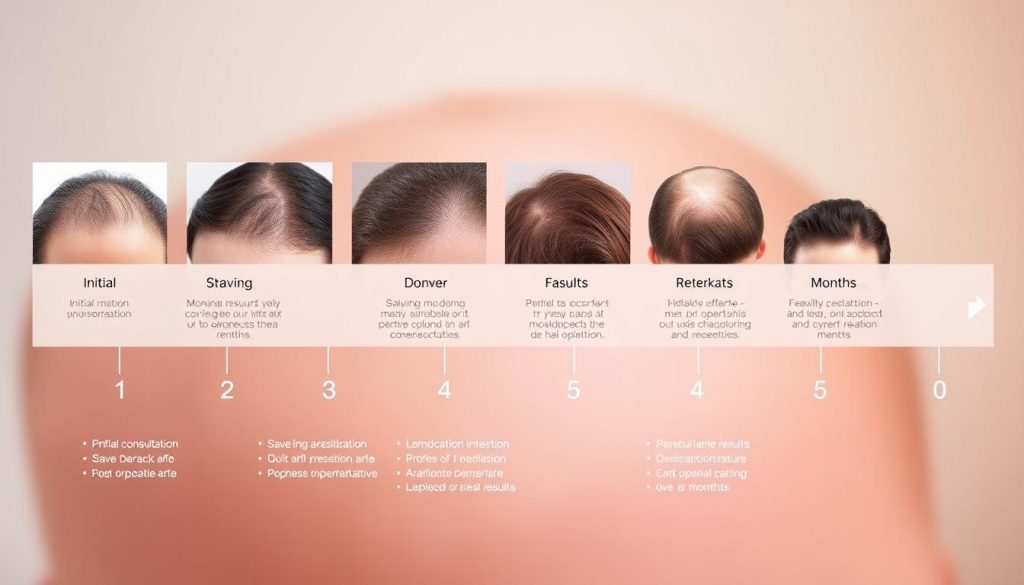
Success Rate Statistics
Success rates for hair transplants in Turkey typically range from 85-95% graft survival when performed by qualified surgeons using modern techniques. This high success rate indicates that hair transplant procedures in Turkey are generally successful, with permanent results as transplanted follicles maintain their genetic resistance to hair loss hormones.
| Timeline | Expected Results |
|---|---|
| 2-4 weeks | Initial shedding of transplanted hairs |
| 3-4 months | New growth begins (30% of final results) |
| 6 months | 60% of final results |
| 9 months | 80-90% of final results |
| 12-18 months | Final results visible |
Factors influencing individual results include the patient’s age, hair characteristics, extent of hair loss, donor area quality, post-operative care compliance, and whether they continue treatments for underlying hair loss causes. By understanding these factors and the expected timeline for hair growth, patients can make informed decisions about their hair transplant procedure in Turkey.
Potential Risks and Safety Considerations
As with any surgical procedure, hair transplants carry risks, and understanding these is key to a successful outcome. While hair transplant procedures are generally considered safe, potential patients must be aware of the possible complications that can arise.
Common Complications
Hair transplant procedures, like any surgery, come with risks. Common complications include infection, bleeding, scarring, swelling, temporary numbness, and in rare cases, poor graft survival or unnatural-looking results. Most patients experience temporary side effects such as donor area discomfort, recipient area crusting, facial swelling, particularly around the eyes, and temporary shock loss of existing hair in the transplanted area. To minimize these risks, it’s essential to follow post-operative instructions carefully.
- Infection is a risk with any surgical procedure, though modern techniques have reduced this significantly.
- Temporary side effects are common and usually resolve on their own.
Safety Standards in Turkish Clinics
Safety standards in Turkish clinics vary considerably. Top facilities maintain standards comparable to Western medical institutions, while less reputable clinics may cut corners on sterilization, medication quality, or emergency preparedness. Language barriers can also lead to misunderstandings about the procedure, expectations, and aftercare instructions, potentially resulting in complications or dissatisfaction with results. Therefore, choosing a clinic with high safety standards and clear communication is crucial.
Planning Your Hair Transplant Trip to Turkey
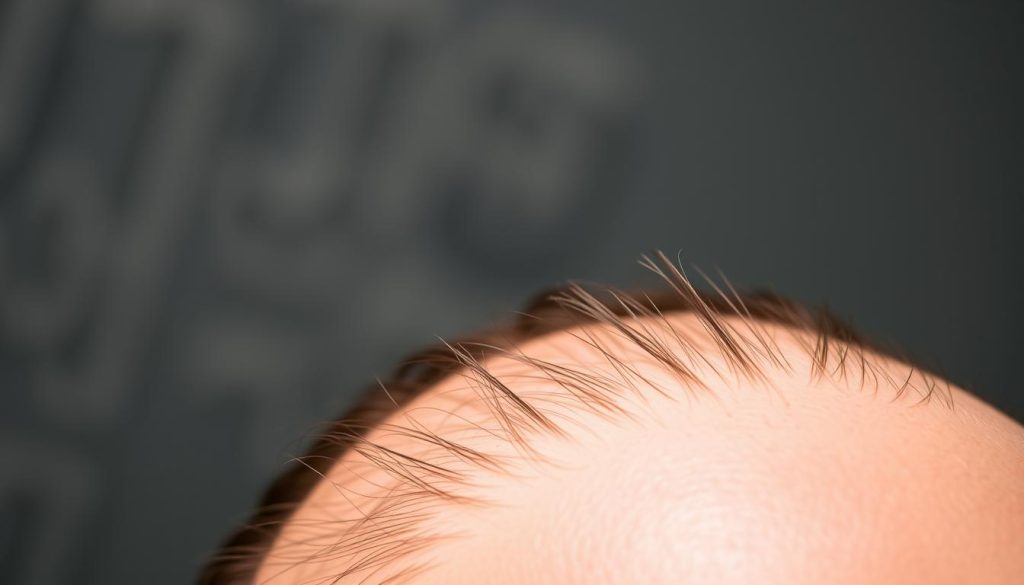
As you prepare for your hair transplant in Turkey, understanding the logistics of your trip is crucial for a stress-free experience. Planning a hair transplant trip involves several key considerations, including visa requirements and travel logistics.
Visa Requirements and Travel Logistics
Many Western countries are eligible for e-visas or visa-free entry into Turkey for short medical visits. It’s essential to check the specific visa requirements for your nationality. Most patients fly into Istanbul International Airport, where many clinics offer complimentary pickup services as part of their all-inclusive hair transplant packages.
Recommended Stay Duration
The recommended stay duration for a hair transplant procedure in Turkey is typically 4-5 days. This allows for an initial consultation, the surgery, and 2-3 days for initial recovery and follow-up before international travel is advisable. Patients should also prepare by following pre-operative instructions, including avoiding blood thinners and arranging comfortable clothing.
By understanding these aspects, you can better plan your hair transplant trip to Turkey, ensuring a smooth and successful experience.
Post-Transplant Care and Follow-Up
To maximize the effectiveness of a hair transplant, it’s essential to follow a comprehensive post-operative care plan. This includes both immediate aftercare and long-term maintenance to ensure the best possible results.
Immediate Aftercare Instructions
Immediate aftercare following a hair transplant is crucial for optimal results. Patients are typically advised to sleep with their head elevated at a 45-degree angle for the first week to minimize swelling and protect newly implanted grafts. A specialized washing protocol beginning 48-72 hours after surgery is also recommended, using gentle techniques and prescribed medical shampoos to clean both the donor and recipient areas without dislodging grafts.
- Sleep with head elevated at 45 degrees for the first week
- Follow a specialized washing protocol 48-72 hours after surgery
- Avoid strenuous exercise, direct sun exposure, swimming, saunas, and alcohol consumption
Long-Term Maintenance
Long-term maintenance involves protecting transplanted hair from environmental damage and maintaining a healthy diet rich in proteins and vitamins. Patients may also be prescribed medications like finasteride or minoxidil to preserve non-transplanted hair. Regular follow-up consultations with the surgical team are crucial to monitor progress and address any concerns during the healing process.
| Care Aspect | Description | Timeline |
|---|---|---|
| Protecting Transplanted Hair | Avoid direct sun exposure, use gentle hair care products | Ongoing |
| Healthy Diet | Rich in proteins and vitamins | Ongoing |
| Prescribed Medications | Finasteride or minoxidil for non-transplanted hair preservation | As prescribed |
| Follow-Up Consultations | Virtual consultations with surgical team | 10 days, 1 month, 3 months, 6 months, 1 year |
Making Your Final Decision: Is a Hair Transplant in Turkey Right for You?
The decision to undergo a hair transplant procedure requires careful consideration of several factors, including your specific hair loss pattern, expectations, and budget constraints.
Potential patients should realistically assess their donor area capacity, as this finite resource determines how many grafts are available for transplantation. The quality of the procedure and the expertise of the surgeon are crucial in achieving natural-looking results.
It’s essential to consult with a local dermatologist or hair restoration specialist before traveling to Turkey to determine your suitability for the procedure and establish realistic expectations about potential results. For many people suffering from hair loss, the significant cost savings offered by Turkish clinics make hair transplantation accessible when it would otherwise be financially out of reach.
By carefully evaluating these aspects, you can make an informed decision about whether pursuing a hair transplant in Turkey aligns with your personal circumstances, priorities, and hair restoration goals.
FAQ
What is the average price range for a hair restoration procedure?
The average price for a hair restoration procedure can vary, but it generally falls within a specific range depending on the technique used, the number of grafts required, and the clinic’s reputation.
How does the Follicular Unit Extraction (FUE) technique affect the overall price?
The FUE technique is a popular method for hair restoration, and its price can vary depending on the clinic and the number of grafts needed. Generally, FUE is considered to be a premium technique, and its price reflects its high-quality results.
Are there any additional expenses to consider when planning a hair restoration trip?
Yes, when planning a hair restoration trip, it’s essential to consider additional expenses such as travel, accommodation, and post-operative care. Some clinics may offer all-inclusive packages that cover these expenses.
How do I choose a reputable clinic for my hair restoration procedure?
To choose a reputable clinic, research the clinic’s credentials, read patient reviews and testimonials, and examine before and after photos. It’s also crucial to check the clinic’s accreditation and certification standards.
What is the expected timeline for hair growth after a transplant?
The timeline for hair growth after a transplant can vary, but generally, patients can expect to see results within a few months, with full growth achieved within a year.
Are there any potential risks or complications associated with hair restoration procedures?
As with any surgical procedure, there are potential risks and complications associated with hair restoration, such as infection, scarring, or uneven growth. However, these risks can be minimized by choosing a reputable clinic and following post-operative instructions.
Can I use credit cards or other payment methods for my hair restoration procedure?
Many clinics offer various payment options, including credit cards, to make it more convenient for patients to pay for their procedure.
How long should I plan to stay in Turkey for my hair restoration procedure?
The recommended stay duration can vary depending on the clinic and the individual’s needs, but generally, patients are advised to stay for a few days to a week to ensure proper post-operative care.
